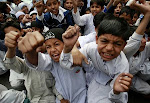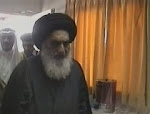Residents of Rafah are concerned by damage done to cash cow tunnels that lead to increased employment and prosperity in city, especially or tunnel owners and merchants. According to Palestinian research institute, tunnels contributed to worsening poverty in Gaza, but played important role in dealing with blockadeGil Feiler, Doron Peskin.
The residents of Rafah have been worried since the start of Operation Cast Lead, in no part because of the economic downturn that could result from damage to the tunnels used for smuggling good from Egypt. It is no secret that the tunnels have been a source of prosperity for this Gaza city for the past two years, and there is great concern that future security arrangements will limit their use.
Economic figures from the tunnel business were published last month by a research institute in the Gaza Strip. According to these statistics, unemployment figures in Rafah reached 20% in December 2008, as compared to 50% in December 2007. The workforce in Rafah is estimated to stand at about 18,000 people.
Expansion of the tunnel business attracted workers from all over the Strip, some of whom were looking for employment and others for commercial purposes. This was quickly translated into a marked increase in economic activity in the city, including both in merchandise supply in stores and in new restaurants and coffee shops springing up.
According to the Palestinian figures, the increase in the number of tunnels since Hamas has risen to power has been astronomical. By the middle of 2007, some 20 tunnels were open in Rafah, while only a year later upwards of 500 tunnels were in operation.
Most of the tunnels were dug within a limited 4 kilometers (2.5 miles) area along the Gaza-Egypt border in the neighborhoods of Tel Zareb, Brazil, and al-Abur, where the ground allows for such digging.
The length of the tunnels usually ranges from 200 meters (0.1 miles) to 1 kilometer (0.6 miles). Digging a tunnel takes weeks, or even months, depending on its length. The cost of digging per 1 meter of tunnel is about $100. Sources in Rafah know that the higher the cost of digging a tunnel, the higher the appetite of the tunnel owners for higher revenues, a fact that usually trickles down in price to the average consumer.
Interests across the border
Resident of Rafah are hoping that the tunnel industry will survive Israel's current military operations in the Strip because of interests that they have across the border with Egyptian merchants along the Gaza border.
Economic groups in the Gaza Strip claim that income created as a result of smuggling via the tunnels averaged about $30 million a year until 2006 and reached $650 million the first year Hamas came to power. These massive sums found their way into the pockets of the tunnel owners and the Hamas government.
Alongside the deep concern in Rafah, many other in the Strip won't be losing much sleep when the said tunnel economy is laid to rest. The Palestinian research institute that published the study on the tunnels noted that they played a central role in deepening the poverty in the Strip, mainly due to the high prices that average consumers were forced to pay for simple goods as a result of the black market created by the greed of shop owners and tunnel owners.
According to this same research institute, ever since Hamas came to power, there has been a marked increase in the number of children begging for handouts in the streets. However, the researchers noted that despite their negative effects on the Gazan economy, "the tunnels played an important role in dealing with the blockade."
Dr. Gil Feiler is founder and managing director of Info-Prod Research (Middle East) Ltd. , and Doron Peskin is head of researchHow can this be?
The UN has gone on the record that the situation in Gaza is a humanitarian crisis even before the IDF started operations.
The truth is almost always 180 degrees from any thing the UN says.
How can this be?
The UN has gone on the record that the situation in Gaza is a humanitarian crisis even before the IDF started operations.
The truth is almost always 180 degrees from any thing the UN says.
12 years ago






















No comments:
Post a Comment